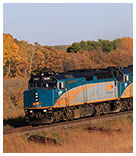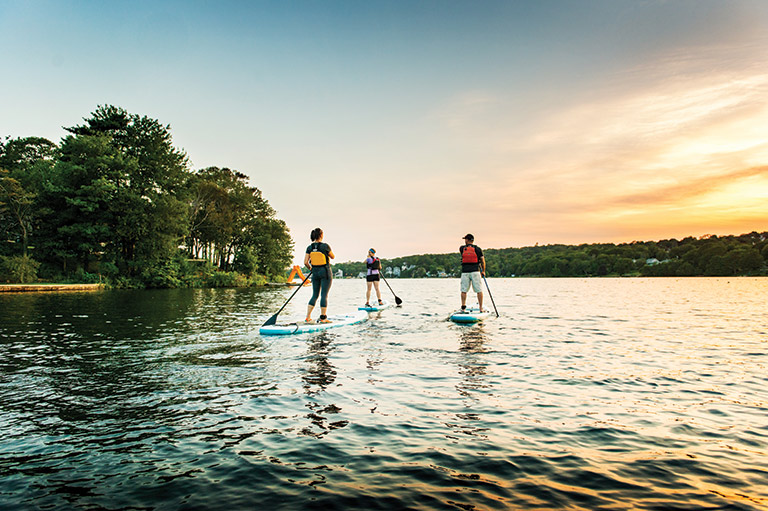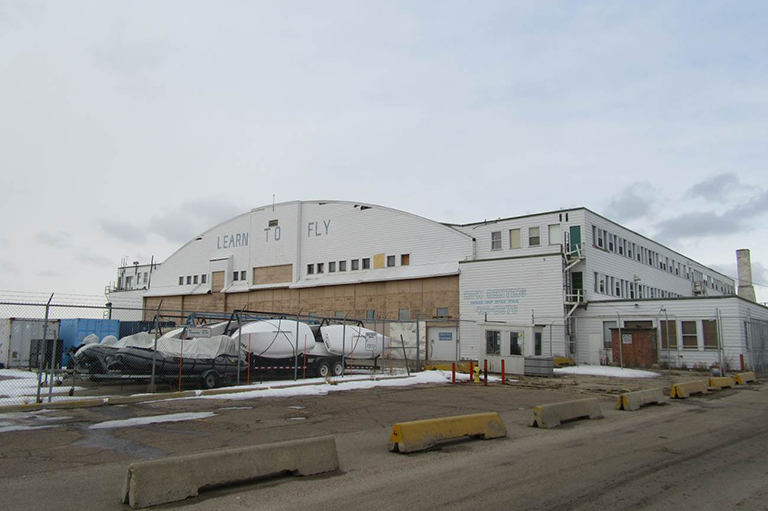A Beautiful Hybrid

What jars you first about the Sharon Temple are its proportions — so odd and yet fiercely symmetrical that seeing it is like looking at a wedding cake or a child’s toy. The perfectly square first storey is topped with a second storey that looks as though it’s half the length and width of the first, and the third storey looks like half of the second. It makes sense: The construction of a breakaway sect of Quakers, it reflects its origins in its breakaway architecture.
The temple is the creation of the Children of Peace, a nineteenth-century splinter group of Upper Canada Quakers. Led by a disenchanted Quaker named David Willson, the sect began in 1812 with just five people and within a few years grew to 350 members focused on establishing a collaborative society. In the spirit of social justice, they established Ontario’s first credit union and a co-operative system of farming based on land sharing.

Constructed between 1825 and 1831 on a public corner of the Willson family farm, the building provided the Children of Peace with a structure in which to congregate, socialize, and make music. Restored and repurposed as a museum in 1918, the Sharon Temple was designated a National Historic Site in 1990.
York University anthropology professor Albert Schrauwers unpacked the historic and built manifestations of the sect in his 1993 book Awaiting the Millennium: The Children of Peace and the Village of Hope, 1812–1889. The temple reflects the concept of God calling upon David Willson to “ornament the Christian Church with all the glory of Israel,” as Willson himself wrote in his 1860 autobiography. Following this ideal, notes Schrauwers, “A mélange of Christian and Jewish symbols, juxtaposed in often antithetical ways, made the temple an unusual yet remarkably beautiful hybrid.”
For years, the Sharon Temple had been on my to-do list of architectural pilgrimages, ever since I beheld the ethereal images captured by architectural photographer Steven Evans in the early 1990s in advance of a series of think-fests at the temple. I finally made the trek in the spring of 2022, just as the temple was emerging from lockdown to resume its robust slate of activities.
Seen in person, the more elaborate details of its architecture become apparent. Each of the four corners of its three storeys is topped by a lantern, together representing the twelve disciples and the Twelve Tribes of Israel. In a nod to social equality, enormous doors open on all four sides of the sixty-by-sixty-foot (18.3-by-18.3-metres) temple, symbolically ensuring that everyone can enter on equal footing.
Inside, the sense of the uncanny looms larger. In the centre of the main floor, a colonnade surrounds an artisanal minibuilding crafted by Children of Peace woodworker John Doan. This is the ark, the covered structure containing a Bible that’s open to the Ten Commandments.
The second-floor mezzanine, open to the ground floor, is where Children of Peace musicians would perform for the community. The building’s acoustics made the music seem to be coming from everywhere. “The Temple itself is, arguably, a musical instrument,” said Mark Fram, an architectural consultant and co-author with Schrauwers of a book about the temple. Music, Fram noted, was “a distinctly un-Quaker activity, but one embraced by the Children of Peace.”
With 7 uniquely curated newsletters to choose from, we have something for everyone.
The narrow staircase to the mezzanine level, known as Jacob’s Ladder, is even more otherworldly. To a casual observer, it’s hard to believe that the entire stairway isn’t curved — but the architecture is playing tricks on us. The staircase runs from top to bottom in a steep but straight line, while the stringers — the structural elements anchoring it on each side — are slightly curved, creating the optical illusion that the entire flight of steps is curved.
The Sharon Temple is now surrounded by eight additional buildings, all of them previously connected to or occupied by the original Children of Peace members. Relocated and rebuilt around the temple, they are remarkable complements to the large edifice they encircle.
These structures include David Willson’s study, a small stand-alone building whose architecture evokes the temple flipped inside-out; master builder Ebenezer Doan’s family home; a trio of his outbuildings known as the drive shed, leanto, and granary; Ebenezer’s nephew Jesse Doan’s log cabin, exemplifying early settler architecture; the community’s cookhouse; and even David Willson’s distinctive round outhouse.
At the back of the property is a large open-air garden, first planted in 2018 and since then maintained with help from volunteers. Providing a seasonal bounty for donations to community members and a local food bank, it is a fitting legacy to the spirit of charitable sustenance that was endorsed by the Children of Peace.
IF YOU GO

GETTING THERE: The Sharon Temple is open Wednesday through Sunday, from May until late fall, and is located at 18974 Leslie Street in Sharon, Ontario. From Toronto, take Highway 404 north, exiting on Green Lane when you get to Sharon. From Barrie, take Highway 400 south and exit on Highway 9. Detailed directions are available at sharontemple.ca.
EXPLORE: Besides the temple, visitors can stroll through most of the smaller heritage structures. Armchair travellers can visit some of the buildings by way of virtual tours accessible through the website.
EAT AND DRINK: The Sharon Temple is animated throughout much of the year with various events, many of them public, and it can be rented for wedding receptions and other private events. Special activities include a heritage celebration on June 8, National Indigenous People’s Day on June 21, Canada Day on July 1, and a candlelit musical concert on the evening of September 8 — a Children of Peace tradition.
Themes associated with this article
Advertisement
You might also like...

Canada’s History and its partners offer unique, history-based tours at home and abroad throughout the year.
Help support history teachers across Canada!
By donating your unused Aeroplan points to Canada’s History Society, you help us provide teachers with crucial resources by offsetting the cost of running our education and awards programs.









